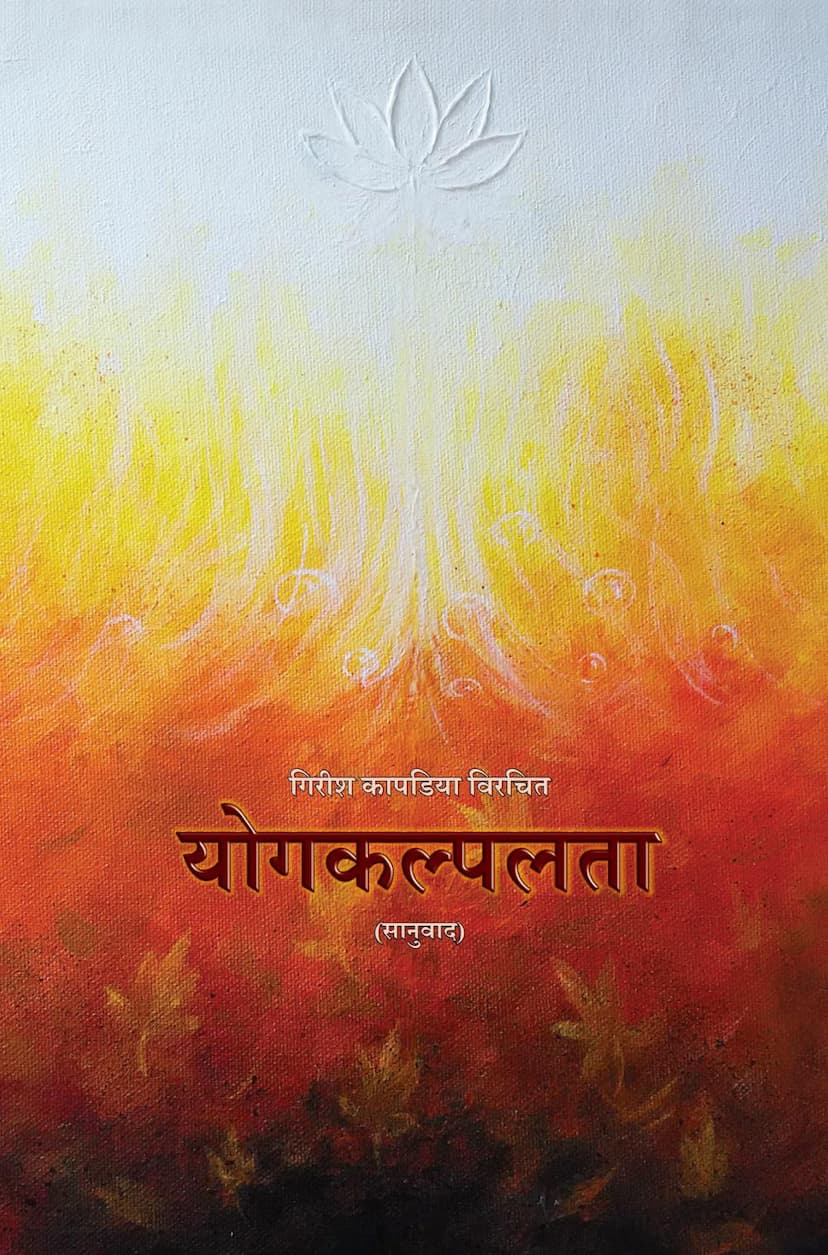Yogkalpalata
Added to library: September 2, 2025

Summary
The book "Yogkalpalata" (योगकल्पलता) by Girish Parmanand Kapadia is a compilation of three of his works, translated and presented by Shrutbhuvan Sansodhan Kendra. The collection is dedicated to and inspired by Muni Vairagyaratividayji M. Sa. and published with the support of the Shri Vimalnath Swami Jain Shwetambar Temple Trust, Pune.
The introduction highlights Girish Kapadia's intellectual prowess from childhood, his initial inclination towards secular poetry, and a pivotal shift in his life towards spirituality after an encounter with Panyasji Maharaj Shri Bhadrakar Vijayji Ganivar. Girishbhai's scholarly background, including his professorship and his habit of composing verses during his commute, are mentioned. The introduction also touches upon the nature of creators, their introspective tendencies, and the rarity of individuals who can balance intellectual depth with practical relationships. It notes that Girishbhai, while inwardly focused, possessed a strong understanding of the self due to the lessening of delusion-causing karma and knowledge-obscuring karma, although his character-deluding karma was not as strong. His spiritual journey was supported by self-study, the grace of his guru, and supportive friends who engaged in deep spiritual discussions.
The book contains three main compositions:
-
Atm-tattva-samikshanam (आत्मतत्त्वसमीक्षणम्): This work delves into the pure nature of the soul. It addresses the human condition of being unaware of one's true, pure self, being perpetually caught in the cycle of worldly existence. It explores profound questions about the soul's state during experiences of attachment and aversion, happiness and sadness, and the fundamental disconnect between the body and the soul. The text emphasizes the importance of samikshana (wise observation) of the soul, moving beyond the intellect to the realm of experience and intuition, as advocated by spiritual masters like Anandghanji Maharaj. It discusses the necessity of controlling the mind, the role of detachment (vairagya) in calming the mind, and the liberating power of the mantra "I am not the body; nothing is mine." This leads to the transformation of knowledge into realization, unveiling the true nature of the world and the path to liberation. True renunciation, born from knowledge-based detachment, empowers one to seek freedom. A soul-aware individual transcends petty thoughts, embraces virtuous thoughts that diminish worldly attachments, and gradually moves towards the soul, experiencing a shrinking of external awareness.
-
Namaskar-Padavali (नमस्कारपदावली): This section is a significant compilation of eight distinct works—Namaskarastuti, Namaskrastava, Namaskaranirupanam, Namaskaranuti, Namaskarkeertan, Namaskara-phal, Namaskaravivechan, and Namaskarasmriti—collectively comprising four hundred verses dedicated to the glorification of the Navkar Mahamantra. The text highlights the widespread use of mantras for worldly gains during the medieval period, leading to the neglect of the Navkar mantra's primary purpose: liberation. It asserts that Namaskar-Padavali effectively presents the spiritual significance of the Navkar mantra. It is stated that the Navkar mantra offers all worldly boons and ultimately leads to nirvana. Chanting the mantra with devotion, after renouncing worldly pleasures and embracing detachment, leads to liberation. The importance of receiving the mantra from a guru is stressed for its efficacy. The verses detail how the mantra destroys negative thoughts, stabilizes the mind, and facilitates the path of self-realization. The specific contributions of each of the eight sub-sections are outlined, focusing on the general and specific glories, the inspiration for remembering the mantra, methods for meditation from Tantric and Hatha Yoga perspectives, the effects of the mantra, descriptions of its virtues, and the benefits derived from its practice.
-
Ashapremastuti (आशाप्रेमस्तुतिः): This composition, according to the introduction, is part of an unpublished work titled "Ashavilastantra" by Girishkumar Parmanand Shah. The term 'Asha' is interpreted as Kundalini Shakti, and 'Girish' as Shiva. The work is described as a praise of Kundalini Shakti, often associated with tantric practices, and the poet's attempt to portray the unity of Shiva and Shakti. It's noted that understanding this work requires a deep study of tantric texts. The verses express deep devotion and love towards 'Asha' (Kundalini), personifying her as a divine beloved, a source of immense joy, knowledge, and power. The verses often use metaphorical language, comparing 'Asha' to the divine consort of Shiva, the source of all arts, and the embodiment of bliss and liberation. The text explores the idea of union with the divine through tantric practices, emphasizing the purification of the mind and the attainment of spiritual states. The deep personal connection between the poet and the divine feminine principle is a recurring theme, with expressions of longing, devotion, and the perceived presence of the divine in all aspects of life.
The book's title, "Yogkalpalata," is explained as being appropriate because the compilation represents a confluence of three works that, like a wish-fulfilling creeper, offer the nectar-like fruit of liberation. The text emphasizes that the pure thoughts presented by Girishbhai, which purify the inner mind, are visible throughout his writings, making the title meaningful. It concludes by highlighting the pride Jainism feels in the current era's spiritual literature and the appreciative readership it finds.